Pooling方法总结(语音识别)
Pooling?layer将变长的frame-level features转换为一个定长的向量。
1. Statistics Pooling
链接:http://danielpovey.com/files/2017_interspeech_embeddings.pdf
The default pooling method for x-vector is statistics pooling.
The statistics pooling layer calculates the mean vector μ as well as the second-order statistics as the standard deviation vector σ over frame-level features ht (t = 1, · · · , T ).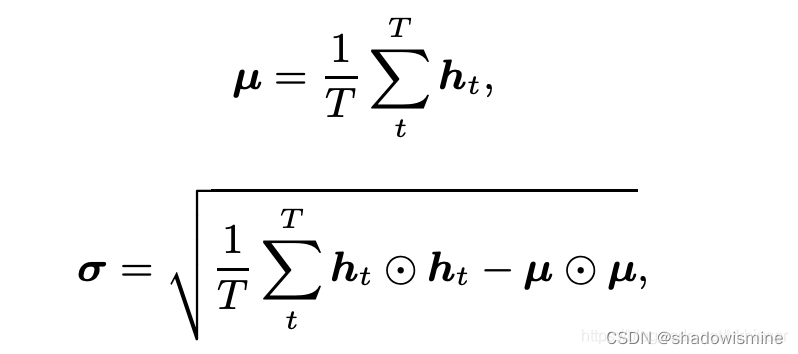
2. Attentive Statistics Pooling
链接:https://arxiv.org/pdf/1803.10963.pdf
在一段话中,往往某些帧的帧级特征比其他帧的特征更为独特重要,因此使用attention赋予每帧feature不同的权值。

其中f(.)代表非线性变换,如tanh or ReLU function。


最后将每帧特征加劝求和


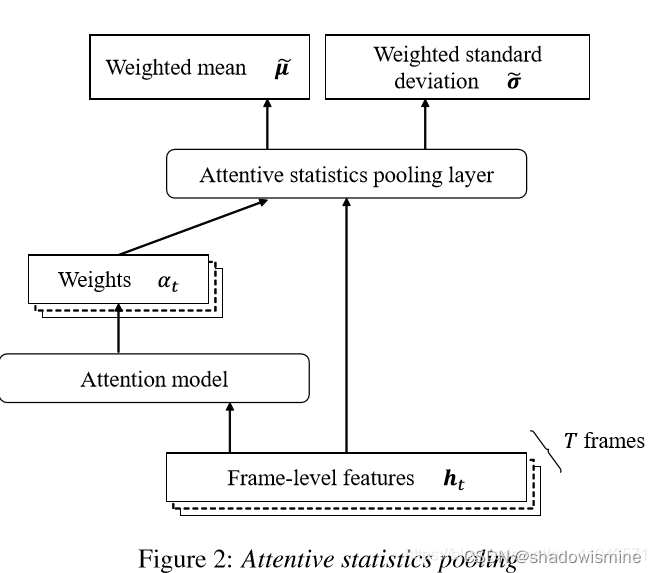
3. Self-Attentive pooling
链接:https://danielpovey.com/files/2018_interspeech_xvector_attention.pdf
4. Self Multi-Head Attention pooling
5. NetVLAD
论文:
https://arxiv.org/pdf/1902.10107.pdf
https://arxiv.org/pdf/1511.07247.pdf


更详细的解释参考:从VLAD到NetVLAD,再到NeXtVlad - 知乎
6. Learnable Dictionary Encoding (LDE)
论文:https://arxiv.org/pdf/1804.05160.pdf
we introduce two groups of learnable parameters. One is the dictionary component center, noted as μ = {μ1, μ2 · · · μc}. The other one is assigned weights, noted as w.
where the smoothing factor ?for each dictionary center?
is learnable.
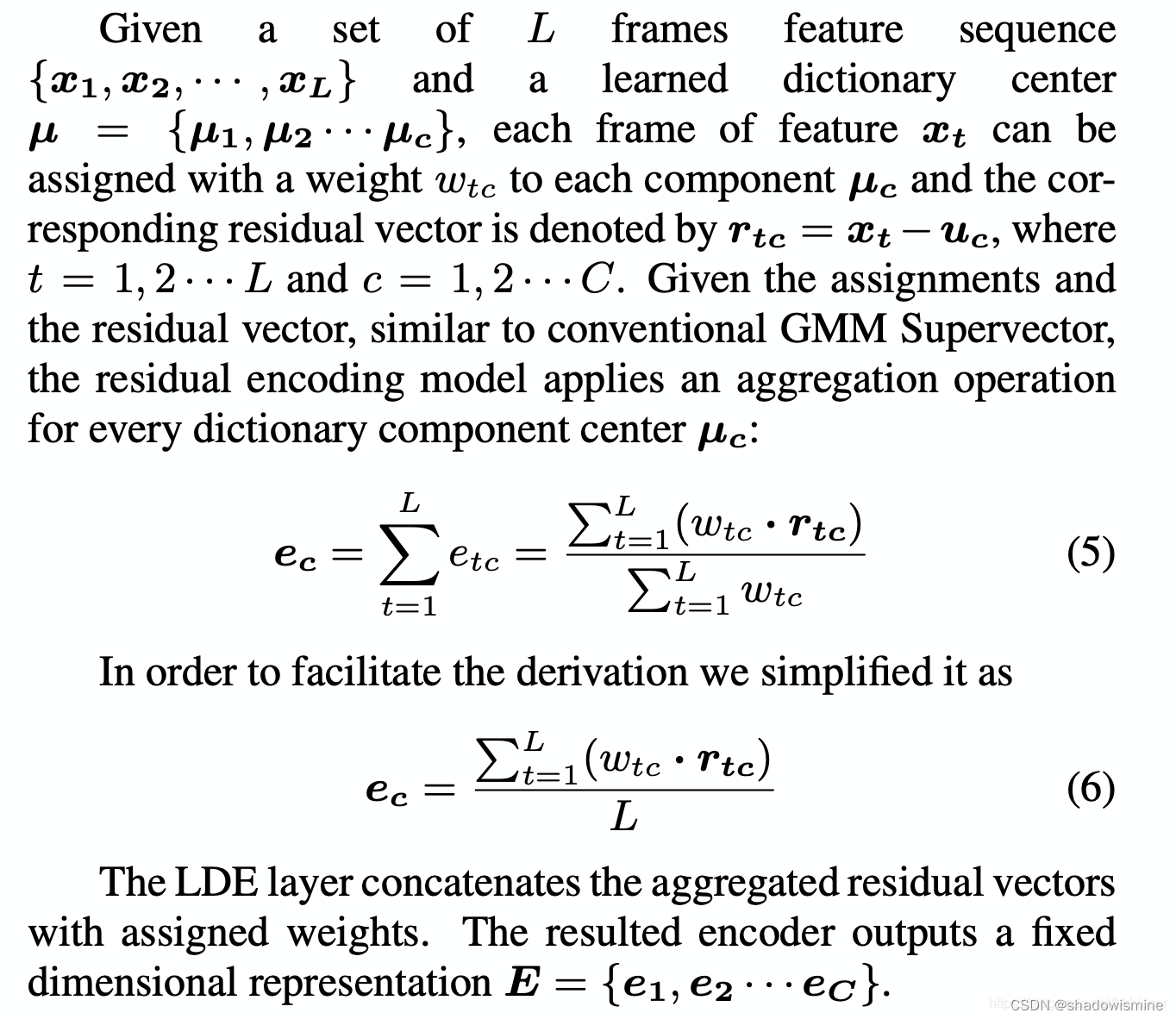
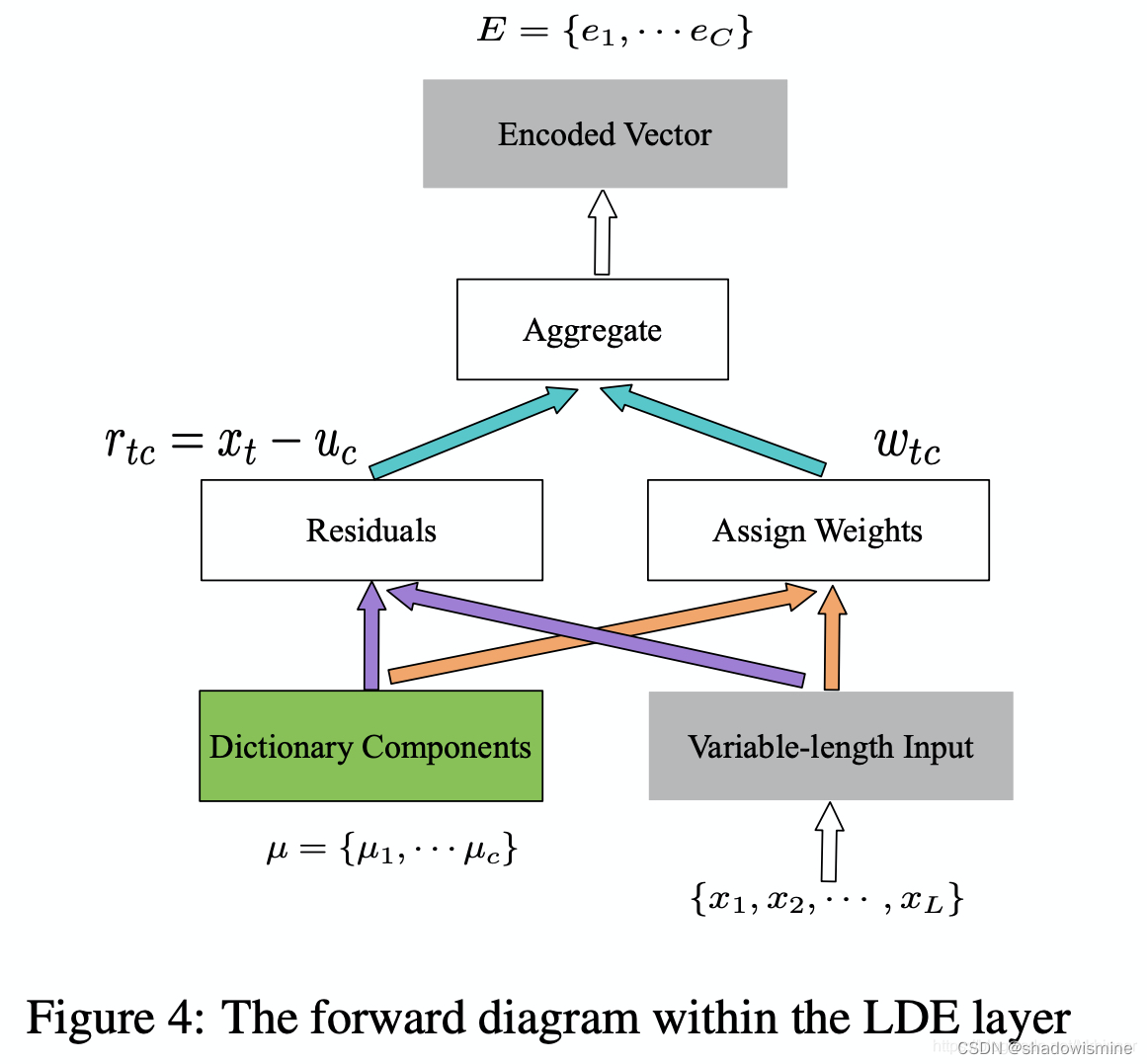
7. Attentive Bilinear Pooling (ABP) - Interspeech 2020
论文:https://www.isca-speech.org/archive/Interspeech_2020/pdfs/1922.pdf
Let be the frame-level feature map captured by the hidden layer below the self-attention layer, where L and D are the number of frames and feature dimension respectively. Then the attention map
?can be obtained by feeding H into a 1×1 convolutional layer followed by softmax non-linear activation, where K is the number of attention heads. The 1st-order and 2nd-order attentive statistics of H, denoted by μ and
, can be computed similar as crosslayer bilinear pooling, which is

where T1(x) is the operation of reshaping x into a vector, and T2(x) includes a signed square-root step and a L2- normalization step.? The output of ABP is the concatenation of μ and
8. Short-time Spectral Pooling (STSP) - ICASSP 2021
????????????????????????????https://ieeexplore.ieee.org/stamp/stamp.jsp?tp=&arnumber=9414094&tag=1![]() https://ieeexplore.ieee.org/stamp/stamp.jsp?tp=&arnumber=9414094&tag=1From a Fourier perspective, statistics pooling only exploits the DC (zero-frequency) components in the spectral domain, whereas STSP incorporates more spectral components besides the DC ones during aggregation and is able to retain richer speaker information.
https://ieeexplore.ieee.org/stamp/stamp.jsp?tp=&arnumber=9414094&tag=1From a Fourier perspective, statistics pooling only exploits the DC (zero-frequency) components in the spectral domain, whereas STSP incorporates more spectral components besides the DC ones during aggregation and is able to retain richer speaker information.
1. 将卷积层提取到的特征做STFT(Short Time Fourier Transorm),每一个channel得到一个二维频谱图。
2. 计算averaged spectral array

3. 计算second-order spectral statistics

4. 将两个特征进行拼接(C is the number of channels)

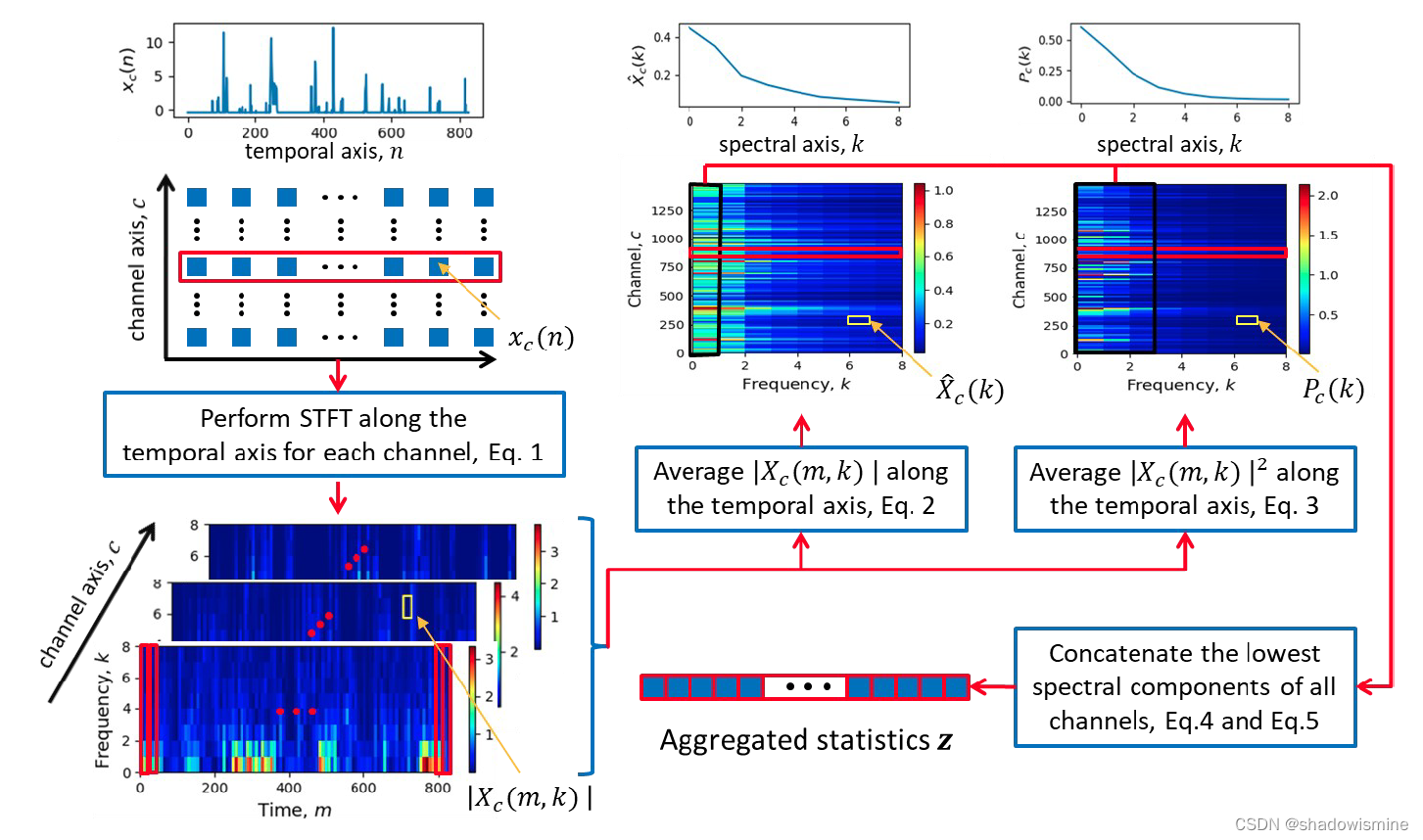
9. Multi-head attentive STSP (IEEE?TRANS.?ON AUDIO, SPEECH, AND LANGUAGE PROCESSING 2022)
One limitation of STSP is that the brute average of the spectrograms along the temporal axis ignores the importance of individual windowed segments when computing the spectral representations. In other words, all segments in a specific spectrogram were treated with equal importance.
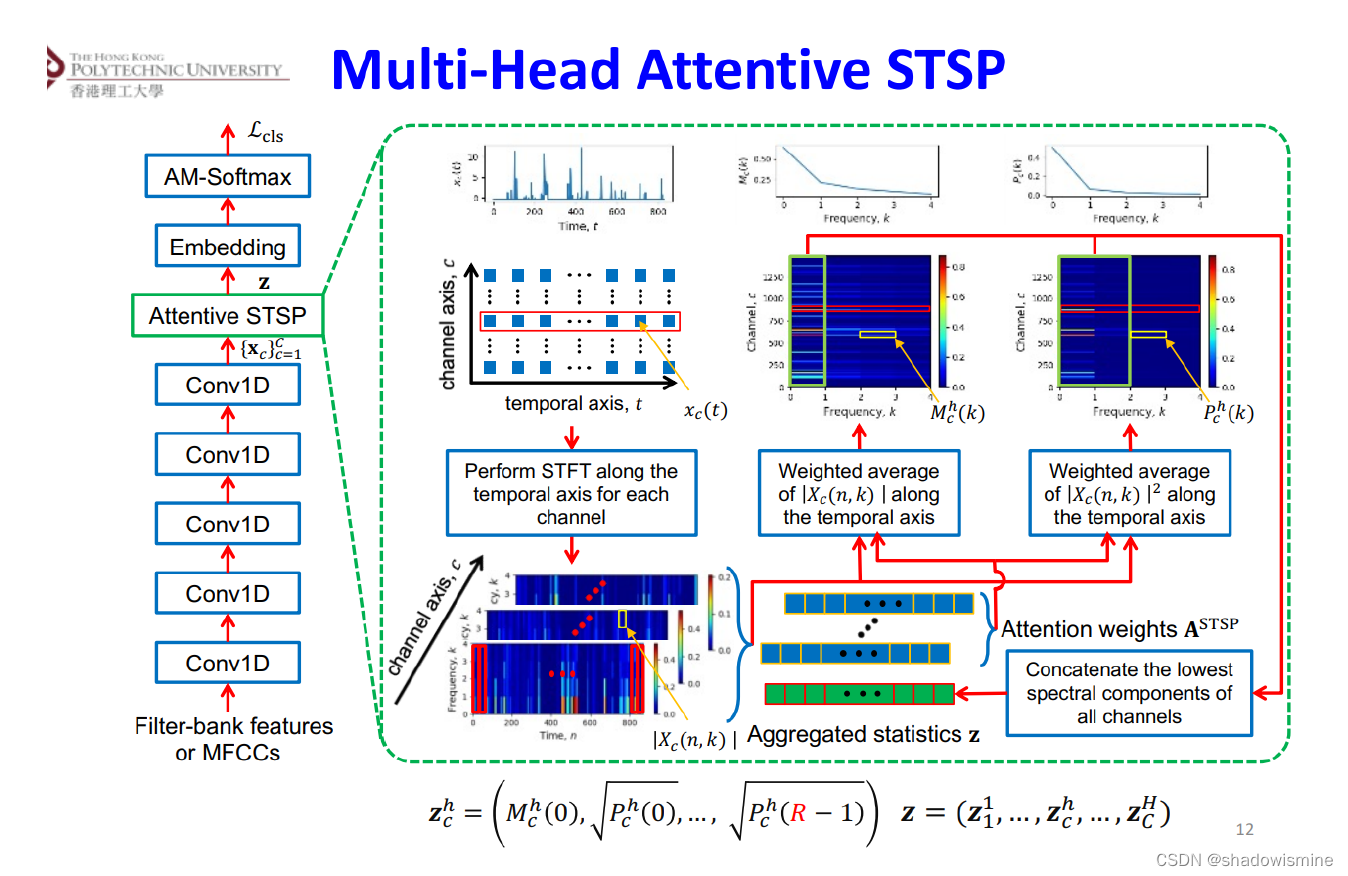
本文来自互联网用户投稿,该文观点仅代表作者本人,不代表本站立场。本站仅提供信息存储空间服务,不拥有所有权,不承担相关法律责任。 如若内容造成侵权/违法违规/事实不符,请联系我的编程经验分享网邮箱:chenni525@qq.com进行投诉反馈,一经查实,立即删除!
- Python教程
- 深入理解 MySQL 中的 HAVING 关键字和聚合函数
- Qt之QChar编码(1)
- MyBatis入门基础篇
- 用Python脚本实现FFmpeg批量转换
- 跟随鼠标动态显示线上点的值(基于Qt的开源绘图控件QCustomPlot进行二次开发)
- 手机崩溃日志的查找与分析
- [New Tech] Compute Express Link 101
- 【linux】Linux云主机搭建LNMP环境
- 1.UnityProfiler性能分析提升性能
- 瑞典最大的连锁超市Coop再遭勒索软件团伙攻击
- 八股文打卡day2——计算机网络(2)
- 【LeetCode:11. 盛最多水的容器 | 双指针】
- Java学习笔记3:Java中 “+” 的使用
- JWT 实现登录认证功能及Cookie、Session 和 Token的区别
